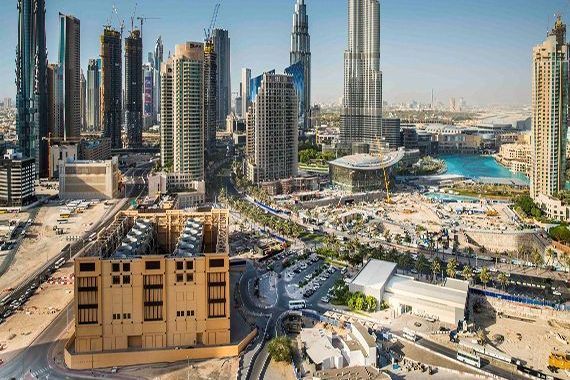
Is District Cooling & Heating Suitable for Australia?
I was reading the other day an article in AIRAH Ecolibrium Magazine (December Issue) about building a district cooling plant for the University of Queensland Gatton and it was great system that provides chilled water to the university campus in efficient way. This article let me wonder whether we can apply the district cooling and heating concept (i.e. District Energy) in a large scale here in Australia and provide chilled and hot water as a service. This let me to think more and I came to the following discussion points:
- The district cooling plant usually uses water cooled chillers, which are more efficient than the air cooled chillers. However, most of the high rise buildings in the Australian capital cities uses also water cooled chillers and not air cooled chillers due to the high cooling capacity required. Have a look for example, on the Melbourne CBD buildings in Google Earth and you can see that most of the buildings have cooling towers on the roof. Further, the district cooling plant requires a fair area of land to be constructed on specially if it has thermal storage tanks, which is hardly available in the CBD of the major cities and if it is available, it would be more feasible to build a tower than a district energy plant. This let me think that district energy plant is not suitable for the cities CBD unless you are building a number of buildings next to each other in one time, then you can build an energy plant to provide chilled and hot water to these buildings.
- This let me think about what if we implement district cooling and heating to the suburbs of the major cities. It is easier to find a land in the suburbs to build the district energy plant but not all the people in the suburbs will buy chilled water and hot water. The weather in Australia is not that extreme and many people use for example, ceiling or pedestal fans in summer instead of air conditioning. This led me to think that this concept will not be financially viable in the suburbs. I had previous experience working in district cooling field in the Gulf Countries (in the Middle East) and the weather in these countries is very extreme where the people can’t live without air conditioning and need cooling day and night and that is why the district cooling concept is financially viable in such countries.
- Laydown the chilled and hot water piping network under the ground to connect it to the existing buildings and houses will not be an easy task. It requires high level of coordination with the other existing services such as sewage, natural gas, water supply, communications…etc, which make it very expensive and time consuming.
- The district cooling plant consumes a large amount of water because it loses water through evaporation in the cooling towers, which imposes stress on our water resources unless we use treated sewage effluent water.
Based on the above discussion, we conclude in our opinion that district energy is suitable for the following building types in Australia:
- University Campuses in which multiple buildings require cooling and heating most of the time of the year.
- Hospital Campuses similar to the university campuses above.
- New large developments located in extreme weather such as Queensland and Northern Territory and have the underground networks for the chilled and hot water included in the design stage.
Cole
You are right in saying connecting to existing buildings will be a challenge.Also there is not much development of high rise buildings going on in Aussie as it is in UAE.I worked in business bay as HVAC tech for a hotel and i must say that system is amazing.